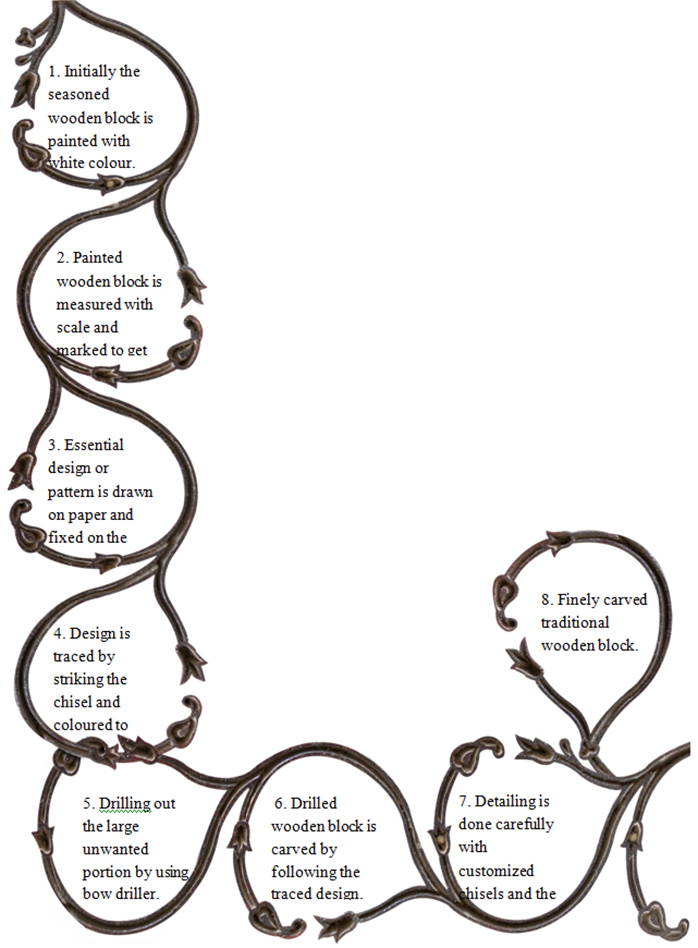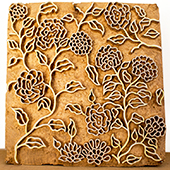Design Resource
Traditional Block Making - Pethapur, Gujarat
Technique to Create Designs on Fabrics
by
Prof. Bibhudutta Baral and Ranjitha M. C.
Block making is an art that repetitively develops with the changes in the fabric printing. The basic design of the block changed noticeably with the development of textile printing. The ‘key block’, which gets printed, first is normally considered as Rekh. Where as in order to print two colours Rekh is divided into two blocks known as ‘chirai’. To develop a second, third and fourth colours artisan need many blocks such as ‘datta’ or ‘daatla’ (second colour) and ‘Gad’ (third colour). Sagwan (teak) wood sourced from Valsad is basic raw material for wooden block making. Primarily wood is cut in to required block size and shape like square, rectangle, oval, round etc. Then the wooden blocks are seasoned and smoothened the rough surface by filing and rubbing on the stone. Seasoning is done by soaking the wooden block in water for long time and then completely air-dried.
Initially required design is drawn on the white paper. The wood is painted with white colour so that the impression of the design will be more visible. The painted wooden block is measured with a metal scale and compass to get an exact square shape and then the wooden block is marked by using sharp tool. The template is fixed on the marked wooden block. Then the required design is traced by striking the customized flat tool. The traced design is then coloured by using colour pencil to differentiate between the raised portion of the block and the negative space.
Artisan drills out the large unwanted portions from the block by moving the bow driller backwards and forwards. Artisan begins to carve the wood by following the design. Variety of customized chisels carves out the minute details with the help wooden mallet.
The tools are often sharpened to work with minute details. The detailing is done with extra care because one small chisel stroke can spoil the design. Then the unwanted edges are removed manually. Finally carver turned the rough wood into finely carved wooden block.
Flow Chart:












